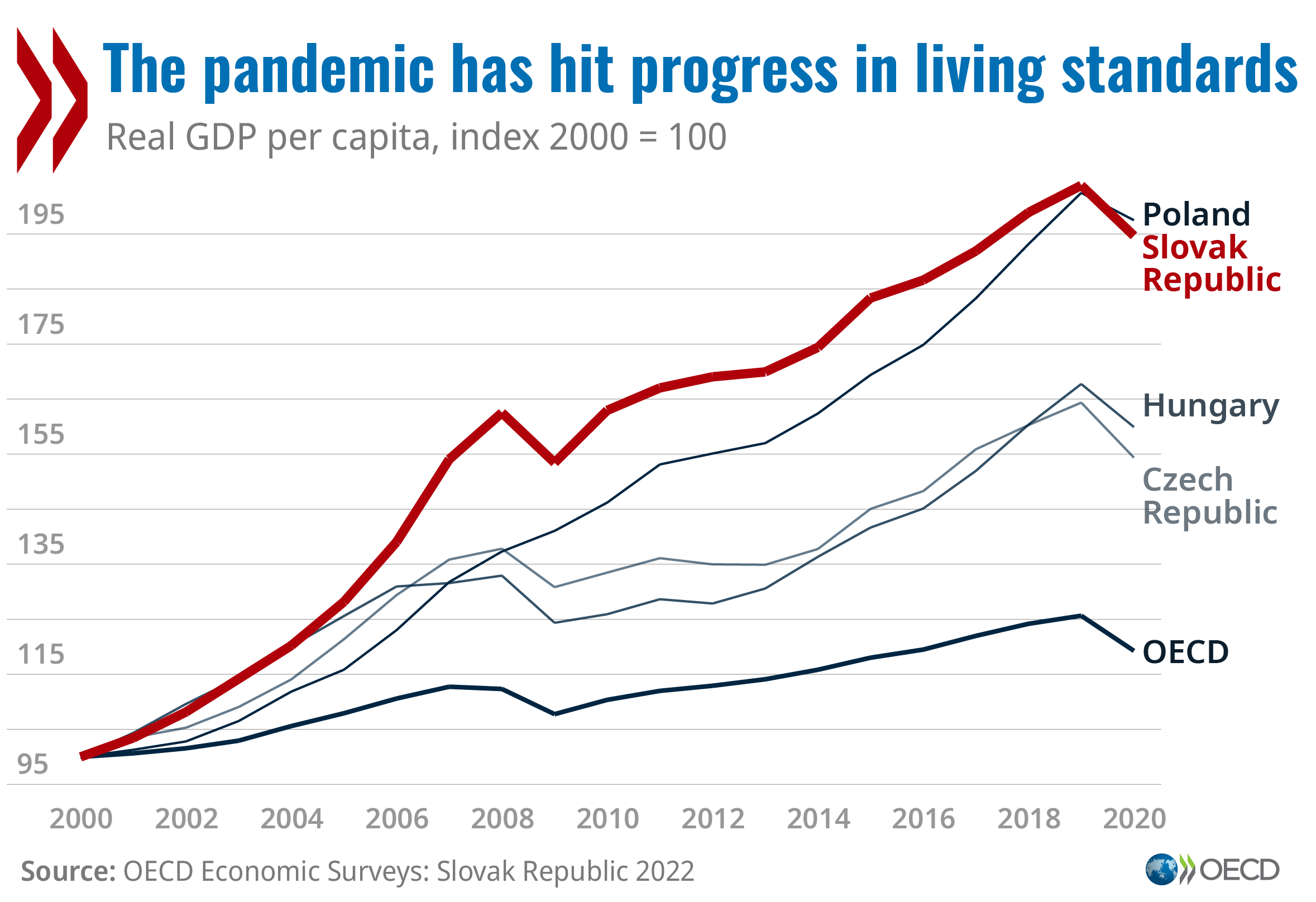Slovak Republic: prioritise reforms to optimise strength and quality of recovery and future growth
Slovakia’s ambitious recovery and resilience plan, supported by the EU, will boost the recovery and growth, but supply chain disruptions and a low vaccination rate continue to pose risks.
Over the medium to longer term - pension, labour and health care reforms are needed, to offset the pressures of an ageing population, according to a new OECD report.
The latest OECD Economic Survey of the Slovak Republic says that, with less than half of the population fully vaccinated, the immediate priority must be to overcome vaccine hesitancy and raise the vaccination rate. Targeted and flexible policy support should be maintained for households and firms that need it, the Survey says. Boosting productivity will be crucial to sustaining living standards as Slovakia is ageing rapidly and faces one of the fastest future declines in the working-age population in the OECD.
“The immediate policy priority for the Slovak Republic is to get more people vaccinated,” OECD Secretary-General Mathias Cormann said, presenting the Survey alongside Prime Minister Eduard Heger in Bratislava. “Once beyond the crisis, addressing the challenges of population ageing will be critically important. Ageing-related spending is set to rise rapidly in the years ahead, which will add to the fiscal burden from the pandemic, while a shrinking workforce will be a drag on future growth. Extending working lives and boosting workforce participation through pension, health and long-term care reforms while helping more mothers, low-skilled, Roma and older workers integrate into the labour market, increasing labour productivity will help to mitigate these pressures.”
 |
The COVID-19 crisis disrupted a steady rise in living standards in Slovakia. Over the period since 2000 Slovakia consistently ranked among the fastest-growing OECD economies. Real per capita income doubled over those two decades. While the pandemic hit the Slovak economy hard, timely policy support, including job retention schemes, limited the impact on employment.
Global supply chain disruptions from the pandemic have affected industry, particularly car production. More recently, this has also slowed the recovery. The Survey projects Slovakia’s GDP growing by 5.0% in 2022 and 4.8% in 2023, after 3.2% in 2021. Consumer price inflation is expected to pick up further to about 5.5% in 2022, before moderating to around 2.5% in 2023.
The government’s plan to invest EU recovery funds in education, healthcare, research and a greener, more digitalised economy would help to foster a strong and sustainable recovery. However, the impact on growth and living standards will depend on timely and effective implementation of the proposed reforms to support the impact of those investments. Improving the education of all children, ensuring adequate skills development for workers of all ages in a digital economy, helping firms to adopt new technologies, raising R&D spending and enhancing the business environment would help to strengthen Slovakia’s capacity to innovate and benefit from the digital transformation. It is also vital to attract highly skilled workers from abroad, including attracting back those Slovaks who have emigrated for their studies.
With rising life expectancy and declining fertility rates, Slovakia’s population is ageing rapidly. The working-age population is expected to shrink by about a 20 per cent between 2021 and 2050. OECD projections suggest that without measures to contain ageing-related costs, notably spending on pensions, health and long-term care, Slovakia’s public debt will rise significantly by 2050.
The Survey recommends designing a medium-term fiscal consolidation strategy aimed to address mounting spending pressures.
Reforms should be undertaken to prolong working lives, help more mothers, Roma and other underemployed groups move into the labour force, improve old-age health, and reduce spending inefficiencies.
The Survey supports relinking the retirement age to life expectancy and tightening pathways into early retirement.
Health and long-term care reforms could include improving preventative care, raising efficiency in hospitals, increasing the number of general practitioners and expanding home and community based long-term care.
See a Survey Overview with key findings and charts (this link can be used in media articles).
Download the complete OECD Economic Survey of the Slovak Republic 2022